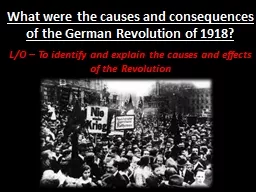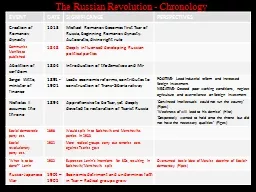PPT-Military and Political Aspects of the Revolution
Author : pasty-toler | Published Date : 2016-08-01
Level 1 Vocabulary Turncoat a traitor Loyalist someone who was loyal to the King Terrain landforms Guerrilla warfare a type of military action using small mobile
Presentation Embed Code
Download Presentation
Download Presentation The PPT/PDF document "Military and Political Aspects of the Re..." is the property of its rightful owner. Permission is granted to download and print the materials on this website for personal, non-commercial use only, and to display it on your personal computer provided you do not modify the materials and that you retain all copyright notices contained in the materials. By downloading content from our website, you accept the terms of this agreement.
Military and Political Aspects of the Revolution: Transcript
Download Rules Of Document
"Military and Political Aspects of the Revolution"The content belongs to its owner. You may download and print it for personal use, without modification, and keep all copyright notices. By downloading, you agree to these terms.
Related Documents














